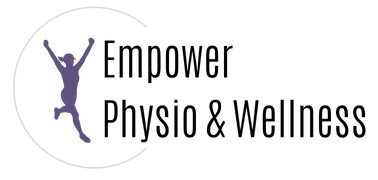There it is again. That deep, dull aching in your bone. You rest for a few days but the moment you try and run again the sharp pain stops you in your tracks. Yep, we’re talking about a stress fracture. They’re no fun, take a good amount of time to heal, and sideline your active lifestyle for at least a few months. No one wants to deal with this kind of injury so let’s break down what stress fractures are, why you get them, and how to prevent them.
What are stress fractures?
You’re probably wondering: What are stress fractures exactly? A stress fracture is a small crack in a bone that occurs in response to high-impact, repetitive activity. The demand on the bone is higher than what the body can repair, which is what causes the fracture line. Stress fractures are most common in lower bones like the femur, tibia, and feet and unfortunately, women, runners, and military personnel are the most prone.
Signs you may have a stress fracture include deep, aching pain that’s hard to pinpoint, pain not improved with short periods of rest, limping when walking, and pain with walking or impact activities. Most stress fractures don’t show up on x-rays and are better diagnosed by an MRI or bone scan.
The most common treatment is to be non-weight bearing which means you may need to use crutches or sometimes a walking boot for 8-12 weeks so the bone can fully heal.
Causes of stress fractures
Put simply, stress fractures happen because there is more demand on the bone than what the body can repair. There are a few risk factors for developing a stress fracture including:
- High volume of high-impact activity. Impact is good for bone health, but too much of a good thing can be detrimental. Our bones get to a breaking point and that’s when a stress fracture happens. This is why they’re so common in runners, marathoners, and people in the military.
- Being female. I hate to break it to my fellow ladies out there but stress fractures are more common in females than males because we’re already more likely to have lower bone mineral density, making us more susceptible to problems from too much repetitive impact activity.
- Low energy availability. Low energy availability occurs when you don’t consume enough calories compared to what the body needs to maintain metabolism and respond to exercise. This puts you in a negative energy balance. In this scenario, the body will break down the least-essential structures to get the nutrients it needs. Bone and muscle tissue are the first two things to be broken down, leading to muscle weakness and brittle bones. People who may have low energy availability are individuals with disordered eating, extreme calorie restriction, postpartum women trying to lose baby fat (especially if breastfeeding, which requires an extra 500 calories/day), and some people following vegetarian or vegan diets, especially if paired with an excessive amount of exercise.
- Women who had the female-athlete-triad or disordered eating as a teen. The female athlete triad is a combination of amenorrhea (loss of menstruation), low energy availability, and decreased bone mineral density often seen in adolescent female athletes. The female athlete triad, with or without disordered eating poses a high risk for future bone health. 90% of bone mineral density is built by age 20, meaning the teenage years are the prime time to build up bone density. Low energy availability in the teenage years poses a big risk to future bone health, especially if you pursue repetitive, high-impact activity during your middle-age years.
How to lower your risk of developing a stress fracture
The best way to keep your bones healthy and prevent stress fractures is to exercise and eat well. Big surprise, right? Let’s dive into the details.
Incorporating strength training
Progressive resistance training, meaning consistently lifting weights 2-4 days per week and increasing the weight over time, is excellent for bone health. Impact activity is also great for building bone density because bone responds to the stressors it encounters. Regular resistance and impact activity should not cause stress fractures unless there is an underlying health or bone problem.
Consuming healthy foods, vitamins & minerals
We talked above about how consuming enough food throughout the day is really important so the body can function optimally. When we don’t eat enough of the food and nutrients we need, the body will break down its own tissue in order to keep us alive. These nutrients are shuttled to priority organs like the brain and heart—bones don’t make that VIP list.
Not only is it important to eat enough food, but it also needs to be high-quality and nutrient-dense. This includes fruits, vegetables, protein, healthy fat, and complex carbs. You get out of your body what you put into it, so if you’re feeding yourself processed foods and sugars, you aren’t going to get the performance results you want.
Vitamins and minerals crucial to bone health include calcium, vitamin D, and vitamin K2. Calcium is obviously important, as it is the primary mineral in our bones, but isn’t super effective unless vitamins D and K2 are present.
Vitamin D helps calcium absorption in the intestines and vitamin K2 activates a protein that is required for calcium to get laid down in bone. Typically a well-balanced diet and sun exposure will supply enough calcium and vitamin D, however, vitamin K2 is rarely consumed in adequate amounts and often requires supplementation.
Protecting your bones during marathon training
If you’re training for a big race such as a half-marathon, marathon, half-Ironman, or Ironman, you’re going to subject your body to a large amount of high-impact activity. This is where training smart comes into play.
Be sure to cross train if you’re prepping for a long race. I recommend running 3-4 days a week and doing another 1-2 days a week of cardio cross training such as spinning, swimming, or rowing. You will get the cardiovascular benefits without excessive amounts of impact. If you’re doing a triathlon or Ironman race, cross training is inherently part of your program.
It’s also important to make sure that strength training is part of your program. Start with 1-2 days per week of strength training to build a baseline then you can taper down to 1 day per week to maintain strength as you build your mileage. Not only will the extra muscle mass help support you during your high-mileage runs, but it will also help boost bone density.
Lastly, I highly recommend periodization in training programs that include a de-load or fall-back week. Roughly every 4th week, cut your training volume in half. This helps your body repair and recover. It also leaves you feeling physically and mentally energized for increased mileage in the weeks to come. This is really a game-changer!
So what are stress fractures? I hope you now know the answer and are equipped with the knowledge you need to prevent them both in everyday life or as you train for a big race. Want to build a customized plan to treat or prevent a stress fracture you’re dealing with? Let’s chat.



